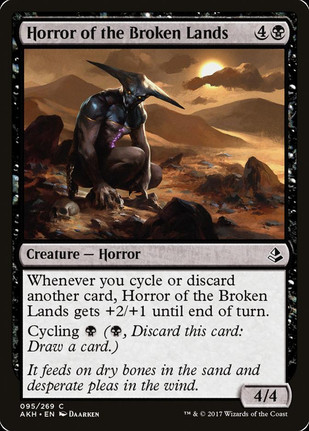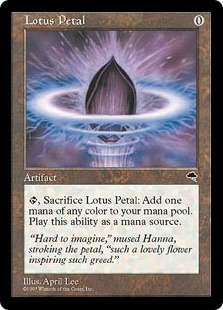Deck of the Week: Pauper Cycle Storm
- Connor Kirkwood
- Apr 12, 2023
- 7 min read
Updated: Aug 23, 2023

Looking back, I fondly remember when Storm was first introduced in Scourge, and I got to do incredible things like create a pack of 4/4 beasts with Hunting Pack or cast free spells with Mind’s Desire. It wasn’t until years later that I realized just how powerful Storm could be when I was introduced to cards like Tendrils of Agony in Legacy.
While I have never branded myself as a ‘Storm player,’ I will always enjoy attempting to build a Storm deck in Vintage Cube and either getting a trophy or failing horribly. Many (if not all) Magic players agree that Storm is one of the most powerful abilities ever printed; however, Storm is not for everyone. Storm was recently a valid archetype in Dominaria Remastered draft, and players either avoided it like the plague or forced it in every single draft they did.
Storm players are a special kind of people, and I have run into more than one that has an entirely foiled-out Legacy Storm deck. They are die-hard and loyal and always attempt to run Storm in every format they can, even if it is not very good. While Legacy has been the easiest format for the Storm archetype to succeed, Modern Storm was powerful for a long time, and maybe one day they will print Storm into Pioneer (although I hope they don’t).
But I have good news for Storm players everywhere, there is another format that you can play Storm in; Pauper! While Chatterstorm, Empty the Warrens, Galvanic Relay, Grapeshot, and Temporal Fissure are all banned in Pauper, there are still some remaining common Storm cards we can use. For this deck, we get to play a card that most people have never even heard of; Reaping the Graves.
How does the combo start?
To win, this deck draws a lot of cards, plays a lot of cards, and then kills the opponent. Sounds like most Storm decks, right? However, because we don’t have tutors or cards that cheapen spells, we have to jump through a couple of hoops to accomplish this.
To start off, this deck does precisely what the name implies. It cycles, and then it storms. Cycle Storm decks usually run around 20-25 cards with a very cheap cycle cost. This lets you loot through your deck, finding all the pieces you need to win. However, other than Street Wraith, most of the cycle cards in this deck cost at least one mana to cycle.
So how do we get the combo started? This problem is solved with fast mana generated from the noncreature spells in this deck. To start the combo, cards like Dark Ritual, Cabal Ritual, and Lotus Petal allow you to begin cycling multiple cards from your hand, drawing more gas and dumping creatures into your graveyard.

This can only last for so long, so this is where one of the cornerstone cards of the deck comes in. Songs of the Damned was originally printed as a common in Ice Age, and it allows your combo to really start to ramp up. Once you have cycled a good amount of creatures into your graveyard, cast Songs of the Damned, and it will generate enough mana to keep your combo going.
The Storming

What if we flood out or we run out of creatures to cycle? This is where the Storm part of the deck comes in. Once we cast Songs of the Damned and generate a bunch of mana, we can now cast Reaping the Graves, which will be copied for each spell that we have cast that turn.
Reaping the Graves allows us to return all of our cycle creatures back to our hand so that we can continue cycling. This is pretty much the entire combo; create mana, cycle creatures, cast Songs of the Damned, and cast Reaping the Graves. If you are doing these four things, you are on the right path.
How do we win?

Okay, so we know how to draw a bunch of cards and cast a bunch of spells, but how do we win? The wincon is actually one of our cycle creatures, Drannith Stinger. Drannith Stinger can be used for the combo by cycling it, and once you have the combo going, you can return it to your hand with Reaping the Graves and cast it. Now you just continue your combo, and eventually, the Stinger will ping your opponent to death.
Now, I already know what a lot of players are going to say. What if we cycle too much and run out of cards in our deck? Does this deck lose to its own combo? It does not, and in order to understand this, you need to understand triggers and how cycling works.
When you cycle a card, the cycling trigger goes on the stack. That means if you have a Drannith Stinger on the battlefield and you cycle a card, the cycling trigger will go on the stack first, and the Stinger trigger will go on top of it.
Therefore, we can allow the damage to occur, and then with the cycling trigger on the stack, we can cycle another card, which will add the new cycling trigger to the stack on top of the old one, and then put the Stinger trigger on both. This allows us to keep cycling without actually drawing any cards. Simply keep doing this until your opponent is dead, even with no cards left in your library!
Helper Cards
There are several cards in this deck with the sole purpose of making sure that the combo doesn’t fizzle out. Almost fifty percent of the deck is comprised of cycling creatures, with most of the rest being essential cards for the combo. This leaves little room for other cards, so most have only one copy in the deck.

The first card is actually a new addition from Crimson Vow. Repository Skaab has multiple purposes in the deck, and that purpose changes based on what you need at a particular moment. It is functionally another copy of whatever spell you need.
Run out of creatures to cycle? Return a Reaping the Graves back to your hand. Running low on mana? Return a Songs of the Damned to your hand. Repository Skaab is a fifth copy of the necessary combo cards in your deck, which makes it invaluable for your plan.

Mystical Teachings serves a similar purpose to Repository Skaab, except it can be used twice. It can single-handedly find your Songs of the Damned and your Reaping the Graves, allowing your combo to further itself. Need to reuse a spell in your graveyard? Use the Skaab. Haven’t found the right spell yet? Use Mystical Teachings. It’s as easy as that.

Blood Celebrant may seem like a bit of a dud compared to the first two. A 1/1 for one that is a really bad Birds of Paradise? Is this really what the deck needs? However, while this deck is mostly comprised of black cards, it is sometimes a four or five-color deck.
There are several blue spells in the main deck and sideboard that are necessary to get around your opponent’s disruption. You will also eventually need to cast a Drannith Stinger, which requires red mana. Some versions even run Weather the Storm in the sideboard, and this makes it that much easier to cast. There are not many ways to create nonblack mana in this deck, and Blood Celebrant can be very useful to get you out of a tough spot.

Another newer card that Cycle Storm adopted is Dihada’s Ploy. Ploy not only allows you to loot through your deck, but it also can gain you a good amount of life. This can be very helpful against Burn, which is quickly becoming one of the most popular decks in Pauper. The Jump-Start ability on this card makes it even more lethal; if you can resolve this card twice against your burn opponent, it can be challenging for them to make a comeback.

Deadly Dispute is the last stand-out card that was recently added to this deck. If you read my article on Pauper Affinity, you will know just how much I love this card. While it doesn’t gain you life, like Dihada’s Ploy, this card helps you draw through your deck while giving you a Treasure token.
Not only is this an additional spell for your Storm Trigger, but the Treasure token generated from it is an additional Lotus Petal for your deck. Remember that horrible Birds of Paradise, Blood Celebrant, that we played on turn one? When it’s not being used to filter our mana, we can sacrifice it to Deadly Dispute, furthering our game plan. Deadly Dispute is quickly becoming a Pauper all-star that should be played in virtually every black deck.
Final Thoughts
While this is a Storm deck, it doesn’t exactly win like a Storm deck. Yes, you are setting up for a single turn where you will sit there, taking game actions, while your opponent falls asleep until you win. While that may remain the same for all Storm decks, the way this deck wins is what makes it so interesting.
Most Storm decks usually cast their Storm card and immediately win the game, whether you’re draining your opponent with Tendrils of Agony, pinging your opponent with Grapeshot, creating an army of goblins with Empty the Warrens, or milling your opponent with Brain Freeze. But this deck is different; casting your Storm card does not win you the game.
While Storm is essential to the combo, cycling wins you the game. This is why the deck is called Cycle Storm and not simply Storm. In this way, the deck is similar to Modern Living End decks. The strategy of both decks is to cycle cards into the graveyard until you can have one turn, where you go off and win the game.
While I obviously recommend this deck to Storm players, I also recommend this deck to anyone that enjoys cycling decks like Astral Slide in Premodern or Living End in Modern. If you have never tried a Storm deck and you identify as a combo player, I also highly recommend this deck.
You can only consider yourself a well-rounded Magic player once you have Stormed off successfully and won a game. It’s a rite of passage. Pauper is a great way to accomplish this, as most of the cards in this deck are cards that most enfranchised players will already have in their collection. Even if you haven’t built up your collection yet, most of the cards in this deck aren’t too hard to find, and most players will happily give you their bulk cards.
Like I say with most decks, even if you hate this type of deck, playing this deck a couple of times can still be beneficial. Find a friend who has it built, or proxy the cards and play a couple of matches with it. This will give you a better understanding of how the deck works, so if you ever run into it in a tournament, you will know their game plan.
And if you love Storm and this deck excites you, have fun Storming the castle!

You can also find the decklist here.



















Comments